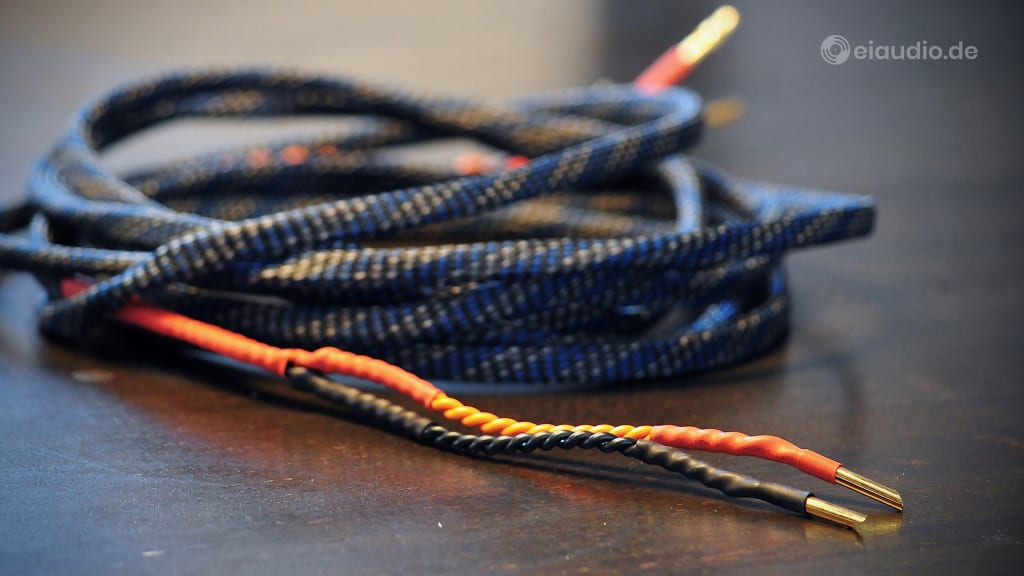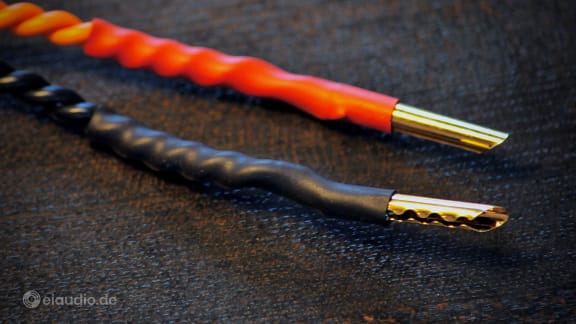Belden 9497
16/01/2021
Author: Karsten Hein
Category: Gear & Review
Tag(s): Cables
When the subject of cable quality comes up in HiFi forums, it is best to disregard the post completely and look at the one-thousandth picture of an amplifier, CD-player, or turntable instead. It is perfectly acceptable to write a comment on an amplifier, such as ‘nice’ or ‘cool’. One might even claim something down the lines of “a friend of mine has one” or, more boldly, “I heard this one once, but I liked another one better”. Because it has been accepted that CD players sound different from each other, because they are made of different materials, have different layouts, etc. Some are better shielded against outside interference, some feature more opulent electronics. The same can be said of preamplifiers, amplifiers, streamers, speakers, and other audio devices. The answer to whether any of this matters is usually: “Of course, because it affects the sound of our HiFi system.” Manufacturers often make a great fuss about having developed a new feature, and, especially in High End, this usually has very little to do with usability, but everything with how it sounds.
When it comes to the subject of cables, however, we are invited to believe in a magic trick. For some obscure reason, both public and expert opinion has it that two cables made up of different materials in different gauges, and based on completely different design concepts have exactly the same effect on sound and behave the same way across all frequencies. According to this popular view, a speaker cable made up of straight 12 AWG copper clad aluminium (CCA) has the same performance over all frequencies as a twisted 10 AWG cable design made of OFC or OCC tinned copper. The implicit logic being that, although the medium changes, the sound stays the same, because cables are merely transducers with no electronic or sonic relevance on their own. Strangely enough, the holders of this argument do not seem to notice or mind the contradiction involved in running 100% of the music signal through a changed medium, without this signal’s quality being affected by the change. While this might be true for cables that are installed to operate a motor or a lightbulb, audio installations are far more sensitive in terms of signal integrity. The simple presence of current is not enough. Cables affect many aspects of music signals which are made up of a combination of overlapping wave lengths and amplitudes that are all too easily influenced by high frequency infiltration and even sensitive to outside touch. The resulting differences are audible in bass extension, bass nuance and layering, mid-band tonal accuracy, voice and instrument timbre, timing, agility, stage representation, high frequency extension and nuance, coherence, and more generally: musicality. Not surprisingly then, in A/B comparison, I have not heard two cables that have the same influence on sound.
In this context, the Belden 9497 is no exception. Heralded in vintage audiophile communities as an entry-level High End speaker cable that works well with low-power tube devices, for instance, it is easily recognisable by its orange and black coating and its tight twisted-pair design. This lollypop look makes it stand out among its unicoloured competition, even before one has had the pleasure of hearing it perform. The two high-conductivity tinned copper conductors are of relatively small 16 AWG diameter and covered with heavy duty PVC insulation. No outer shielding is used, but—similar to Western Electric and similar manufacturers—Belden have tightly twisted the cable’s conductors to cancel out high frequency (HF) radiation. The downside of this design is that the individual cable becomes longer. However, considering the 9497’s low resistance over 1000 ft of just 4.27Ohms, one meter more or less is likely to have a relatively small impact when compared to the benefit of cancelling out airborne high frequencies from the signal. Conventional shielding, on the other hand, introduces additional mass to the signal path and tends to hamper the agility and thereby the musicality of a cable. Going without shielding altogether is becoming increasingly impossible in times of interfering communication signals such as WiFi, DECT and cellular.
How does it sound? Well, to my ears it sounds great, but it took us a long time to get there. The cable was recommended to me by Luigi, who has devoted his life to finding audiophile gems, especially in the context of vintage audio. This recommendation happened at a time, when I had only been familiar with regular multi-strand speaker cables that were composed of various diameters and ranged from copper-clad aluminium (CCA) to oxygen free copper (OFC). Neither of these cables had been very special in their sound, although I had noticed that changing from 2.5mm to 4mm diameter lead to improvements in bass response. And I had changed speaker cables often enough to understand about run-in times. Because, whenever I had changed cables, I had been disappointed at first, thinking that I had made a wrong purchase. Yet, after a while, I grew accustomed to the new sound, until I was happy again, often happier than before. I had simply thought this was me getting used to the cable, until I began changing back and forth between used cables and realised that they did lead to a different sound, but never to the one that had troubled me when they were fresh out of the box. The cables had matured somehow, but I did not give it much thought, until I connected the Belden 9497.
After hearing the Belden at Luigi’s house, I had decided to purchase a pair for myself. The 9497 are not so common in Germany, and importers usually levy a big mark-up. I therefore found a supplier in Japan and ordered 10 meters for bi-wiring with 2x 2.5m on each side. I also bought 5 meters of Viablue cable sleeve, some shrink tube and silver solder, a better soldering station, and some gold-plated rhodium-copper banana plugs—the hollow version for low-mass connections. By that time, I had already learnt that low-mass was important for maintaining musicality, and that a single point of contact on the amp side produces superior homogeneity. This means, in customising the cables, I used two banana plugs on the side of the amp, joining the poles of the same colour together for the purpose; and I used four banana plugs on the side of each speaker, with separate connections for the high and low frequency drivers. In my experience, this provides greater bass control than simply using cable jumpers or the speaker manufacturer’s standard bridges.
My first sonic impression of the customised cable playing in our main system was anything but pleasant. The music sounded overly tight and tinny, there were no transients to speak of, and mid-bass was as low as it would go. The stage seemed centred and packed, and the music clung to the speakers. What irritated me most was a tonal imbalance in the voices. If I had not heard the cable perform before, and if I had not learnt about cable burn-in, I would have gone back to my OFC copper on that day, or on any day over the next few weeks, actually. Since it was not much fun to listen to, I would turn on our system before going to bed and get up early in the morning to listen for changes. After the first week of playing, voices began to sound more natural and closer to those on our matured system. Some time later, the music started to free itself from the speakers with individual notes lingering for longer. After about a month, bass had become more extended and natural. After about two months, the stage was fully set, with lots of space between instruments, natural voices, as well as full and contoured bass.
I have gone back to the OFC cables on occasion, for example when changing the length or making other changes to the Belden. Whenever I do so, it feels as if I am listening to music through a thick veil. The Belden beats the OFC in all aspects, most obviously in terms of agility, tonal balance, and transparency. For the sake of further explanation I will try other speaker cables, of course. But considering the engagement and joy I get from listening with the Belden, I know to have set a standard that is going to be difficult to beat. Following the considerable improvement in sound, I have since installed this cable on both of our systems. The run-in time was the same on both occasions.
Tested on the following setup: CD player: Marantz CD-17 (on WesternElectric); Preamp: DB Systems DB1 (Haegermann audiolabs Epic 1); Power amp: B&K ST-140 (on Belden 9497); MartinLogan SL3
Specifications
- Cable Lengths: 2.5m
- Cable Construction: Twisted Pair
- Wire Diameter: 16AWG (5,3mm)
- DC Resistance: 4.27Ohms / 1000ft
- Inductance: 0.19 uH / ft
- Wire Material: tinned copper, multi-strand
- Dielectric: Polyvinyl Chloride
- Handling: bi-directional, flexible-resilient
- Termination: gold-plated rhodium copper
- Position tested: amp to speakers




